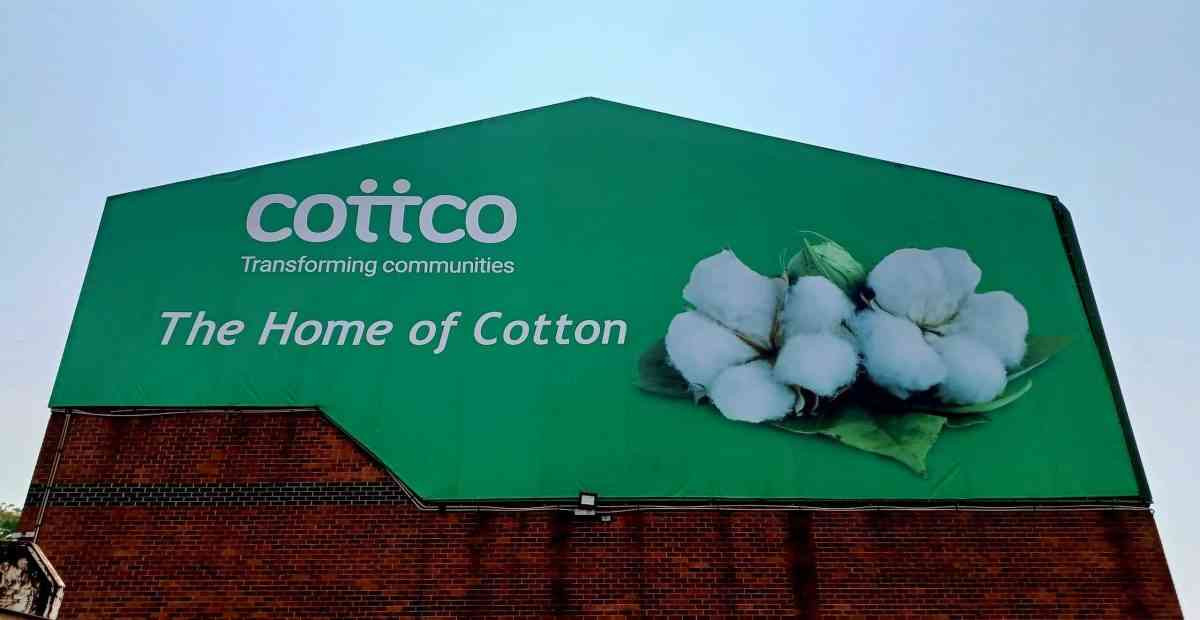
Zimbabwe’s wholesale and retail sector is now the biggest contributor to Gross Domestic Product (GDP) with close to 25% of output.
The official figures only account for merchandise declared to customs at the country’s ports of entry where imports of manufactured or processed merchandise accounted for over US$6 billion in 2022. The figure does not account for diesel, petrol, vaccines, soya bean crude oil, electricity, and raw agricultural commodities such as maize, wheat and soya.
Over and above this, it is estimated that close to US$1 billion of cargo is smuggled into the country or under declared to customs to pay less in duties. The smuggled merchandise is mainly retailed in the buzzing informal sector.
The major sources of manufactured merchandise being South Africa, China, Singapore, Zambia, and Mozambique. In terms of exports, mineral and tobacco exports account for 92% of the total figure with the share of manufactured (or partially processed) commodities being less than 7% of the global figure.
This points to the extent to which the economy is susceptible to global commodity price shocks in minerals and the telling lack of diversification to advanced value addition of such minerals or even tobacco.
Yesteryear industry
At its peak in 1998, the manufacturing sector contributed 42% to the country’s export earnings. Deindustrialisation in Zimbabwe started around 1995 but at a gradual pace, then picked up in 1997 and 1998 after unbudgeted government expenditures led to loss of value for the Zimbabwean dollar. The fast-track Land Reform Programme of the year 2000 put the final nail on the coffin as farm disruptions strained agro-based processing and raw material supplies.
From the year 2000 to 2008, the sector witnessed rapid decline in productivity as producers closed shop and downsized while foreign investors in the industry divested from Zimbabwe.
- ‘Zim’s retailers deserve a wage subsidy’
- ‘Zim’s retailers deserve a wage subsidy’
- Africa’s debt conundrum
- High input costs could hit crop output
Keep Reading
The 2009 to 2013 period saw a spectacular resurgence in capacity utilisation to an average of 45% as the multi-currency regime stabilised inflation and improved disposable incomes which are critical for consumption.
However, underlying structural problems cost the industry as consumption for imported commodities also spiked under the stronger US Dollar. Local consumers quickly developed a strong appetite for imports with South African consumer brands finding a home in Zimbabwean shelves.
Policy blunders
The role of the central bank in allocating foreign currency in the market has worked in the favour of retailers who import finished merchandise at the expense of local manufacturers who get at most 30% of their needs.
This is aggravated by the fact that local producers cannot compete with the Chinese or South African manufacturers who produce in volumes at a lower cost than local producers. Aiding the foreign exchange blunder is the granting of import licences by the government to various retailers who import merchandise that is already being produced in the country.
On exports, local manufacturers opt to supply export markets at a loss or at break even prices to maintain hard won markets and earn foreign currency to service offshore debt.
However, the current export surrender requirements where 40% of the export value are converted to the local currency using a manipulated exchange rate (significantly lower than the market rate) has compromised export viability.
This also applies to the 20% in foreign currency deposits converted to local currency using the same exchange regime. Overall, the policy environment from taxation, import and export procedures, foreign exchange regime and currency are combining to thwart investment in the industry.
Where re-industrialisation is failing
Zimbabwe’s manufacturing industry has strong backward and forward linkages with agriculture, thus growth in agriculture productivity directly leads to improved capacity utilisation in manufacturing. The agriculture sector is hamstrung by lack of capital to improve on mechanisation as farmers do not have title to land.
The 99-year leases offered by the government clearly state that all land belongs to the state and that it carries the discretion to withdraw the lease when it deems fit. This means banks and financiers cannot extend lines of credit to farmers and there is limited incentive for landholders to maximise production or develop farmland.
Production in agriculture is also affected by pricing and payment delays (viability) constraints with the government being the biggest financier, price setter, consumer and lawmaker (regulator). The manufacturing sector itself has its own unresolved pertinent challenges such as high costs of production (complex tax environment), obsolete equipment (lack of capital), and unhealthy competition from dumped or smuggled merchandise, policy inconsistency and macroeconomic instability (high inflation and lack of foreign currency).
These constraints are currently derailing re-industrialisation efforts and can be partially addressed through policy reforms below:
Reduction of import duty
There are three different types of payments upon importation of goods into Zimbabwe. These are import duty, surtax, and Value Added Tax (VAT).
Most raw materials used for manufacturing are subject to surtax and VAT. The government uses the General Agreement on Trade and Tariffs (GATT) method of customs valuation. To incentivise industrialization, reduce production cost and improve export competitiveness, the government needs to significantly reduce import duties paid by local manufacturers for raw material imports.
To complement the loss of revenue, the government needs to have a tiered tariff system where imported commodities pay duty in accordance with the level of value addition done. Thus, the more the processing done to the commodity, the more the tariff levied. Critically, raw materials imported for value addition with the intention to export finished goods should be exempted from import duties.
Addressing production costs
The high cost of producing locally is one of the primary reasons why Zimbabwean products struggle to break into the export market. The high cost of doing business takes into account the cost of capital (interest rates), transportation, electricity, labour, fuel and rentals. To move cargo in Zimbabwe, it costs US$0.12 per tonne/km using road and US$0.06 per tonne/km using rail. The SADC average is US$0,07 by road and US$0,03 by rail. Similarly, diesel currently retails at over US$1,65/Litre in Zimbabwe as compared to a regional average of US$1.30/Litre (If Angola is removed). To address this structural constraint, the government needs to urgently reform its tax regime especially on import and export clearance fees, streamline permits paid to government agencies, reduce excise duty on fuel and award manufacturers long term licences (instead of licences that need renewal quarterly while attracting fees). To address labour cost, the Labour Act needs to be amended to give flexibility to employers to hire contract workers easily and to terminate contracts on short notice without the burden of blanket fixed minimum retrenchment packages. The flexibility removes hesitation from various producers to hire contract workers as and when need arises, which in effect benefits both the employee and the employer in the job market.
Attracting investment
Zimbabwe’s investment climate is still hampered by the unpredictability of the government’s economic policies especially monetary policies and lack of respect for property rights. Additionally, the current complex exchange control regime makes it difficult to remit dividends and move capital formally. The country is still far from instituting a market based foreign exchange market, which means that exchange control losses persist for local and international investors.
Incentivising exports
The government currently retains 40% of all export receipts and 20% of domestic sales done in foreign currency using a pegged rate lower than the free market rate. Such surrender requirements act as a tax on exports, and an unsustainable subsidy for importation (& consumption) of various goods at the expense of exporters who operate on thin margins. Moreover, all exporters now pay most taxes in foreign currency. To incentivize exports and improve viability, the formal auction market should be liberalised from government control and be a true managed floating exchange rate as is the case in other developing markets.
Incentivizing import substitution
Half of the country’s import bill in 2022 is composed of products that used to be manufactured in Zimbabwe but are now being imported from China, Singapore and neighbouring countries who are now manufacturing at a lower cost than Zimbabwe. The country’s import substitution policy should have non-monetary incentives such as import duty or VAT holidays based on attaining specific production targets. These should be sorely for imported products that can be manufactured locally such as Fertilisers and Agro Chemicals, Industrial Chemicals, Newsprint, Paper and Packaging materials, Pharmaceuticals, Iron and steel products, Furniture, Plastics, Skin Care and Beauty products.
The positive effects of reindustrialisation to sustainable economic growth and employment creation cannot be overemphasised. Strategic policies to reindustrialise the economy represent the best economic model to derive maximum benefits from raw commodities and create value chain linkages from primary production to consumer goods production. The gains realised in subsidising agriculture and ramping up mining production can only make economic sense if commodities from those two key sectors are processed by the local industry instead of being exported in raw form, then ultimately be imported as finished products by consumers. Reindustrialisation calls for partnerships between government and the private sector through business-friendly policies, instead of over taxation to meet short term revenue collection targets.
- Bhoroma is an economic analyst. He holds an MBA from the University of Zimbabwe (UZ). — [email protected] or Twitter @VictorBhoroma1











